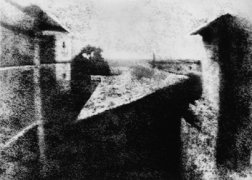| photography
Margot Quan Knight

Cancer
[more]
thanks to consumptive.org
Photography at a Crossroads
In this digital era, the future of historical photos is at stake
 One summer day in 1826, Joseph Nicéphore Niépce placed a metal plate inside a black box in a sunny window at Le Gras, his country estate in the south of France. After 8 hours, Niépce found that with his primitive camera, he'd achieved a goal that he'd been striving after for years: He'd produced a permanent image recorded onto a photosensitive medium. It was the first successful example of "fixing permanently the image from Nature," Niépce told members of the Royal Society when he traveled to England in 1827. However, when Niépce presented his invention, he wouldn't fully divulge his process, and the society failed to confirm his discovery. One summer day in 1826, Joseph Nicéphore Niépce placed a metal plate inside a black box in a sunny window at Le Gras, his country estate in the south of France. After 8 hours, Niépce found that with his primitive camera, he'd achieved a goal that he'd been striving after for years: He'd produced a permanent image recorded onto a photosensitive medium. It was the first successful example of "fixing permanently the image from Nature," Niépce told members of the Royal Society when he traveled to England in 1827. However, when Niépce presented his invention, he wouldn't fully divulge his process, and the society failed to confirm his discovery.
Today, it's known that Niépce coated his plate with an asphalt called bitumen of Judea, which hardened under long exposure to the sun's rays. He then washed the unhardened material from the plate with a mixture of oil of lavender and white petroleum, leaving the faint image of his courtyard in relief. Nonetheless, the fine details of this process died with Niépce in 1833.
Such murkiness is rampant in the history of photography. In the almost 180 years since Niépce made the world's first photograph, inventors, artists, and photographers have used 150 or so chemical processes to create prints, says Dusan Stulik of the Getty Conservation Institute in Los Angeles. For many of these processes, no detailed technical account is available.
[more]
thanks to consumptive.org |

